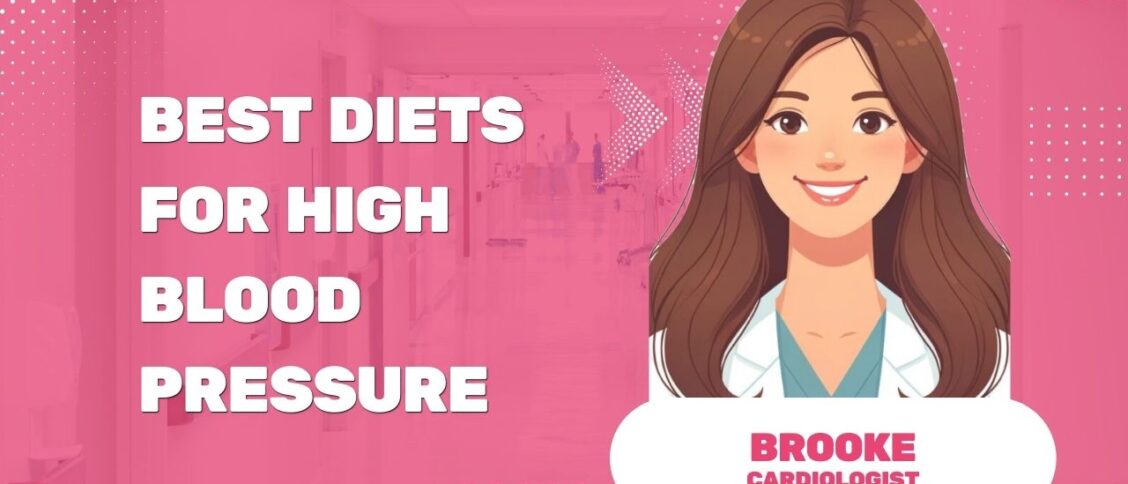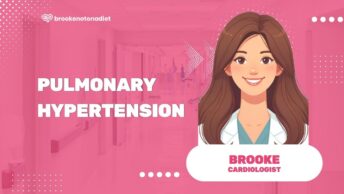If you’re like me, you’ve probably heard the term ‘hypertension’ thrown around more times than you can count. But what is it really? Simply put, it’s high blood pressure, a condition that can lead to serious health problems if not managed properly.
One of the most effective ways to control hypertension is through diet. I’m not talking about a quick fix or a fad diet, but a long-term, sustainable way of eating that can help keep your blood pressure in check.
In this article, I’ll be sharing some of the best foods and eating strategies for managing hypertension. From understanding the role of sodium to the importance of a balanced diet, you’ll gain the knowledge you need to take control of your health. So, let’s dive in and explore the world of dieting for hypertension.
What is the DASH diet?
Imagine a dietary plan specifically designed for people who have high blood pressure but can also benefit people suffering from heart ailments. That’s the DASH diet for you. Standing for Dietary Approaches to Stop Hypertension, it advocates reducing sodium intake and consuming a variety of food rich in nutrients, such as potassium, calcium, and magnesium, to help lower blood pressure.
How much does DASH diet cost?
Contrary to what many might think, the DASH diet is not a costly affair. You don’t need any special equipment like a blood pressure monitor, nor do you have to buy exotic or expensive food items. It’s about making smarter food choices. Here’s an estimated cost comparison table:
| Food Item | Regular Price | DASH Diet Price |
|---|---|---|
| Fruits | $2.00 | $2.50 |
| Veggies | $1.50 | $2.00 |
| Dairy Products | $3.00 | $3.50 |
| Grains | $2.50 | $3.00 |
| Meat, Fish, and Poultry | $4.00 | $4.50 |
What is on a DASH diet food list?
The DASH diet food list consists of healthy items from all food groups. Here is a shortlist of typical foods you’d find:
- Fruits and Vegetables
- Whole Grains
- Lean Meats
- Fish and Poultry
- Nuts and Beans
What you can’t eat on a DASH diet?
While this diet promotes a lot of food items, there are some things that are a big NO. Foods high in saturated fats, such as fatty meats and full-fat dairy products, should be avoided. Refined grains, like white bread and rice, should also be minimised.
What are the suggested servings on a DASH diet?
Unlike traditional diets that strictly dictate portion sizes, the DASH diet focuses on the bigger picture by ensuring you get the right amount of different food groups each day.
For instance, for a 2,000-calorie-a-day diet, a typical day on the DASH diet might look like:
- 6 to 8 servings of grains
- 4 to 5 servings each of vegetables and fruits
- 2 to 3 servings of dairy products
- 6 or fewer servings of meat, poultry, and fish
7-day DASH diet meal plan
Planning a week’s menu in advance can make it easier to stick to the DASH principles. Here’s a basic 7-day DASH diet meal plan.
- Day 1: Vegetable omelette for breakfast, grilled chicken salad for lunch, and salmon with steamed veggies for dinner.
- Day 2: Whole-grain cereal with low-fat milk for breakfast, turkey wrap for lunch, and grilled shrimp with a quinoa salad for dinner.
- Day 3: Fresh fruits with Greek yogurt for breakfast, veggie burger for lunch, and baked chicken with broccoli for dinner.
- Day 4: Oatmeal with almonds for breakfast, tuna salad for lunch, and lean steak with sweet potato for dinner.
- Day 5: Scrambled eggs with spinach for breakfast, chicken Caesar wrap for lunch, and lentil soup for dinner.
- Day 6: Banana smoothie for breakfast, chicken noodle soup for lunch, and grilled halibut with a side of green beans for dinner.
- Day 7: Whole grain pancakes with strawberries for breakfast, veggie stir-fry for lunch, and spaghetti with marinara sauce for dinner.
While you may think of a diet as a set of strict rules, I view the DASH diet as a flexible and balanced eating approach. With this plan, not only are you lowering blood pressure but you’re setting yourself up for a healthier lifestyle.
Is there any other diet besides DASH diet good for high blood pressure?
As we delve deeper into our discussion, it’s crucial to zoom out and consider other diets that may also positively influence blood pressure levels. After all, the DASH diet isn’t the only dietary player in town when it comes to managing high blood pressure.
Is Keto Diet Good for High Blood Pressure?
The ketogenic (keto for short) diet primarily involves a shift from using carbohydrates to fats as your body’s main fuel source. Studies have shown that the keto diet’s low-carb, high-fat orientation can lead to weight loss, which in turn aids lowering blood pressure.
There’s the catch, though. If you’re on medication for high blood pressure, you must consult your healthcare provider before embarking on a keto diet, due its drastic change in nutrient intake.
Is Mediterranean Diet Good for High Blood Pressure?
Ah, the Mediterranean diet—known for its heart-healthy benefits. This particular diet focuses on
- Intake of vegetables, fruits, whole grains, and healthy fats.
- Moderate amounts of poultry, dairy products, and eggs.
- Minimal red meat indulgence.
The underlying idea is to pull back on saturated fats and cholesterol, both culprits of high blood pressure. With the Mediterranean diet’s emphasis on fresh produce and lean proteins, it’s primarily designed to keep your heart healthy and blood pressure in the optimal range of the blood pressure chart.
Is Vegan Diet Good for High Blood Pressure?
A vegan diet is characterized by the exclusion of all animal products, focusing on fruits, vegetables, legumes, whole grains, and plant-based proteins.
Studies suggest that this diet can be particularly effective at decreasing blood pressure levels due its fiber-rich and low-fat properties.
However, it’s important to ensure a balanced nutrient intake from varied sources when following a vegan diet. A poorly designed vegan diet might lead to nutrient deficiencies.
Is Paleo Diet Good for High Blood Pressure?
The Paleolithic, or paleo diet, attempts to mimic our ancestors’ eating habits. It’s all about consuming what we allegedly evolved to digest: lean meats, fruits, vegetables, nuts, and seeds.
While the reduction in processed food can certainly contribute to lowering blood pressure, the diet’s high meat content could potentially offset the benefits, given that a high meat intake might lead to an increased blood pressure.
Is Carnivore Diet Good for High Blood Pressure?
The carnivore diet, a diet consisting of meat, fish, and other animal foods like eggs and certain dairy products, might not be your best bet for managing blood pressure. While some anecdotal reports claim lower blood pressure on this diet, there isn’t enough research evidence to recommend it for managing blood pressure.
Does Fasting Lower Blood Pressure?
Fasting can potentially aid blood pressure reduction, given its proven benefits in weight loss and metabolic health enhancement. It’s essential, however, to approach fasting with caution and ideally under professional guidance, as abrupt dietary changes could pose other health risks.
What are the best foods for high blood pressure?
Eating a healthy diet can have a profound effect on blood pressure. It’s not just about the diets you choose, but also the individual foods you consume daily. It’s worth noting that these are not magic bullets, but they can make a significant difference when consumed in a balanced diet plan. Let’s look at some of the top foods recommended for managing high blood pressure.
Berries: Berries like strawberries and blueberries contain anthocyanins, a type of flavonoid that’s been linked to lowering blood pressure. A serving of these delicious fruits can enhance not just your breakfast, but also your health.
Bananas: My personal favorites, bananas, are packed with potassium, which can help to manage blood pressure. Consuming a banana each day contributes a good 12 of the daily potassium recommended by nutritionists.
Beets: Rich in nitric oxide, beets can help your blood vessels open up, thereby easing blood pressure. Juiced, roasted, or cooked, beets carry the potential to both add color to your meals and care for your heart.
Here is a quick-reference list of other notable foods:
- Oats: High in fiber, low in fat, and low in sodium.
- Dark Chocolate: This sweet treat can help lower high blood pressure and boost the health of your blood vessels.
- Leafy Greens: Filled with potassium, these help your kidneys get rid of excess sodium, contributing to lower blood pressure.
- Garlic and Herbs: Flavorful and healthy additions that make meals taste better and lower your blood pressure.
- Fatty Fish and Omega-3s: The omega-3 fatty acids in fishes like salmon and mackerel are great for heart health.
- Pomegranates: This fruit is a natural ACE inhibitor, it helps lower blood pressure and is full of potent antioxidants.
| Food | Amount/Day |
|---|---|
| Fruits and Vegetables | 8-10 servings |
| Grains, preferably whole | 8 servings |
| Low-fat or non-fat dairy foods | 2-3 servings |
| Nuts, seeds, legumes | 4-5 servings/week |
| Lean proteins | Less |
What are the best drinks for high blood pressure?
It’s not just food that plays a crucial role in managing your blood pressure; beverages also matter. While everyone knows eliminating sugary drinks and limiting alcohol is wise, knowing what to drink for lower blood pressure is equally important.
When checking your blood pressure, the readings on a blood pressure chart or blood pressure monitor could be kept within the healthier blood pressure ranges thanks to some of these drinks. Let’s dive in.
- Water: No surprises here. Hydration is key in maintaining a healthy blood pressure. It’s supremely essential to keep the body functioning at its peak. No fancy gadgets needed to monitor this one.
- Low-fat milk: High in calcium and vitamin D, low-fat milk helps to lower blood pressure. It’s recommended as part of the DASH (Dietary Approaches to Stop Hypertension) diet.
- Beet juice: Research has shown this vibrant root vegetable can lower blood pressure thanks to its high levels of dietary nitrate.
- Pomegranate juice: Packed with potent antioxidants, this jewel-toned juice can lower blood pressure and improve heart health.
- Hibiscus tea: Prized for its ability to lower systolic blood pressure, consuming hibiscus tea daily could be included in your blood pressure lowering regimen.
To put it simply, the following table provides the best drinks for lowering blood pressure:
| Drink | Reason |
|---|---|
| Water | Maintains hydration |
| Low-fat milk | High in calcium, vitamin D |
| Beet juice | High in dietary nitrate |
| Pomegranate juice | Full of antioxidants |
| Hibiscus tea | Can lower systolic blood pressure |
So there we have it. These drinks present a tasty range of options for maintaining a healthy blood pressure. As always, balance is paramount. Including these drinks into your dietary regimen is one of the steps you can take in lowering your blood pressure.
What are the best herbs for high blood pressure?
Herb consumption, combined with a balanced diet and healthy lifestyle, can significantly aid in managing high blood pressure. The right herbs in your diet may help in lowering your blood pressure, so it’s worth understanding which ones can be beneficial.
Here, we’ll identify some valuable herbs, and shed light on the foods and drinks you might want to steer clear of if you’re dealing with high blood pressure.
What Foods Should You Avoid When You Have High Blood Pressure?
Foods high in sodium and saturated fats contribute to increasing your blood pressure. So, it’s advised to limit these foods. Below is a quick-reference markdown table highlighting common culprits:
| Foods to Avoid | Reason |
|---|---|
| Processed meats | High in Sodium |
| Canned orPacket Soups | High in Sodium |
| Frozen Dinners | High in Sodium and Saturated fat |
| Fast Foods | High in Sodium and Saturated fat |
What Drinks Should You Avoid When You Have High Blood Pressure?
Just like with food, some drinks can negatively impact your blood pressure too. Drinks high in caffeine, sugars, and alcohol can lead to an increase in blood pressure. Here’s a quick-reference markdown table illustrating the drinks to avoid:
| Drinks to Avoid | Reason |
|---|---|
| Soda | High in sugars |
| Excessive Coffee | High in caffeine |
| Alcohol | Can raise blood pressure if consumed in excess |
Keep in mind that while it’s important to avoid these drinks, it doesn’t mean you have to eliminate them entirely. The key is moderation. One cup of coffee won’t spike your blood pressure instantly, but excessive consumption can lead to long-term implications.
To maintain a healthy blood pressure range, It’s essential to use a blood pressure monitor regularly for checking blood pressure and keeping track of any changes. It’ll enable you to implement any necessary dietary alterations at the right time.
In short, incorporating the right herbs in your diet and abstaining from certain food and drinks can play a key role in managing and lowering blood pressure effectively. Of course, these alterations are just part of a larger action plan that includes regular exercise, stress management, and overall healthy living are equally critical.
What are the other ways to lower blood pressure besides diet?
While diet is a significant factor influencing your blood pressure, it isn’t the only weapon in your arsenal for managing hypertension. A holistic, balanced approach to health can provide further blood pressure-lowering benefits. Let’s explore some of these additional strategies.
Regular Exercise
Physical activity is a critical tool in blood pressure management, and it can also benefit your overall cardiovascular health. For adults, it’s recommended to engage in 150 minutes of moderately intense aerobic exercise or 75 minutes of vigorous-intensity activity each week. Always consult with your healthcare provider before beginning a new exercise regimen to ensure it’s safe for your specific health condition.
To help you keep track of your exercise schedule, consider purchasing a blood pressure monitor that features fitness tracking capabilities. This device not only alerts you about your blood pressure ranges but also keeps a log of your daily physical activity.
Stress Management
Considering the hustle and bustle of modern life, stress can be unavoidable. Unfortunately, chronic stress can lead to prolonged hypertension and other health issues. Incorporating stress management techniques into your lifestyle can significantly lower your blood pressure. These techniques can include activities like yoga, meditation, deep-breathing exercises, and even soaking in a warm bath or reading a good book.
Curious to know the effects of these interventions on your blood pressure? A blood pressure chart could serve as a useful tool to analyze the trends and patterns in your readings.
Limit Alcohol and Quit Smoking
Alcohol and tobacco use have both been linked to high blood pressure. Limiting your alcohol consumption to moderate levels – for men, that’s up to two drinks a day, and for women, it’s one drink a day – can help avoid hypertension. Meanwhile, every step you take toward quitting smoking provides immense benefits for your blood pressure and overall heart health.
Medication
As much as lifestyle changes play a crucial role, sometimes, they might not be enough. If you are consistently checking your blood pressure and see no improvements despite your efforts, it might be time to discuss medication options with your healthcare provider.
Remember, these strategies aren’t singular solutions on their own, but rather pieces of a larger puzzle in lowering blood pressure and maintaining overall heart health. Also, keep in mind that it’s essential to personalize these guidelines to fit your individual needs and circumstances.
Why you should monitor blood pressure at home?
Monitoring blood pressure at home has become increasingly important. It’s not just for those who have been diagnosed with high blood pressure. It’s a preventive step that can help you be aware of your blood pressure levels. But the question is, why do it at home when you can simply visit a doctor?
There are several reasons for this. First, you can avoid white-coat hypertension, which is when blood pressure spikes at the doctor’s office due to anxiety. Home monitoring also allows for better and regular tracking, leading to early detection of any potential issues.
It’s also useful in checking the effectiveness of your new lifestyle changes or medication in lowering your blood pressure. Besides, it gives you a stronger sense of responsibility for your health and can improve your adherence to treatments.
What are the Best Home Blood Pressure Machines?
When it comes to home blood pressure monitors, accuracy is the most crucial factor. Some top-rated devices that have proven their precision include:
- Omron Platinum Blood Pressure Monitor
- LAZLE Blood Pressure Monitor
- GreaterGoods Blood Pressure Monitor Kit
Use these machines to keep a tab on your blood pressure levels at home and observe if they fall within the healthy blood pressure range. Here, is a simple yet informative blood pressure chart that might help you grasp the idea:
| Blood Pressure Category | Systolic mm Hg (Upper Number) | Diastolic mm Hg (Lower Number) |
|---|---|---|
| Normal | Less than 120 | Less than 80 |
| Elevated | 120 – 129 | Less than 80 |
| High Blood Pressure (Hypertension) Stage 1 | 130 – 139 | 80 – 89 |
| High Blood Pressure (Hypertension) Stage 2 | 140 or higher | 90 or higher |
| Hypertensive Crisis (consult a doctor immediately) | Higher than 180 | Higher than 120 |
Regularly checking your blood pressure at home can help you combat hypertension and heart associated risks in a much stronger way. Just remember, these devices are aids. They’re intended to supplement regular checkups with your doctor—not replace them.
Final words
So, you’ve made it through my deep dive into managing hypertension. I’ve highlighted the significance of home monitoring for blood pressure. It’s not just about dodging white-coat hypertension, but also about staying ahead of potential problems and ensuring your lifestyle adjustments or medications are working. I’ve even shared my top picks for home blood pressure monitors. But remember, this doesn’t mean you can skip your doctor’s appointments. They’re still crucial. Let’s keep our blood pressure in check and live a healthier life, shall we?







